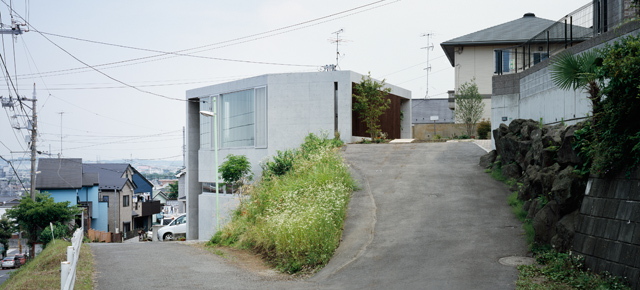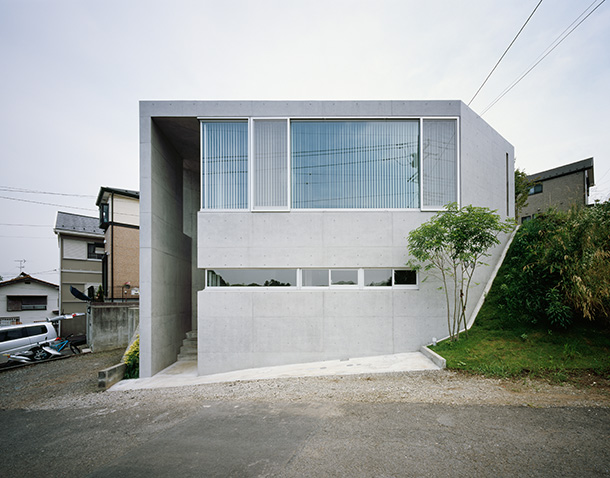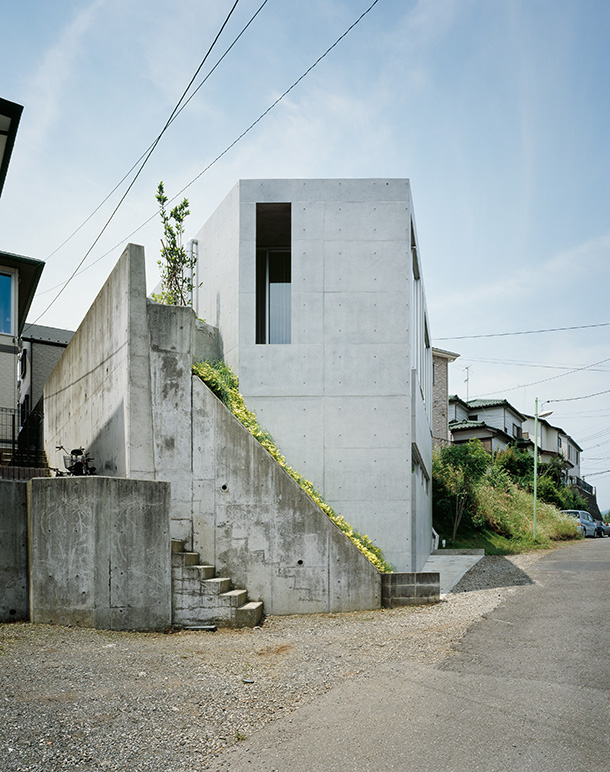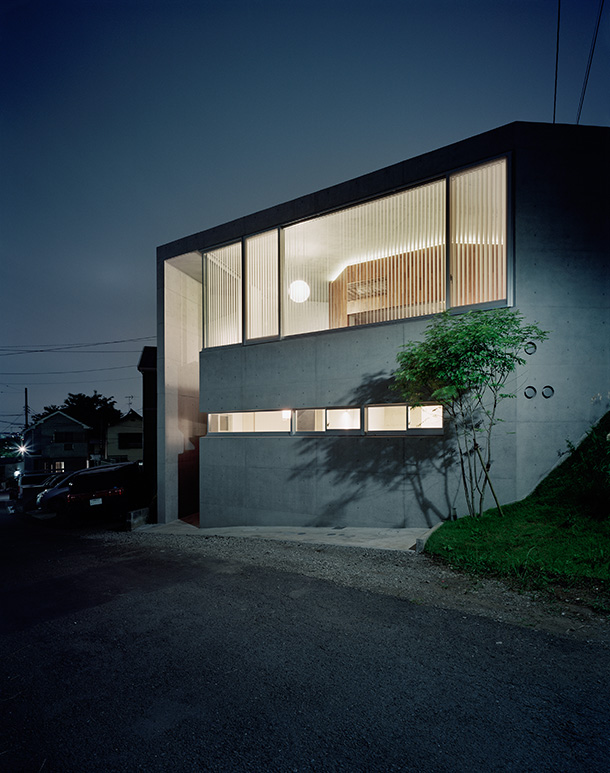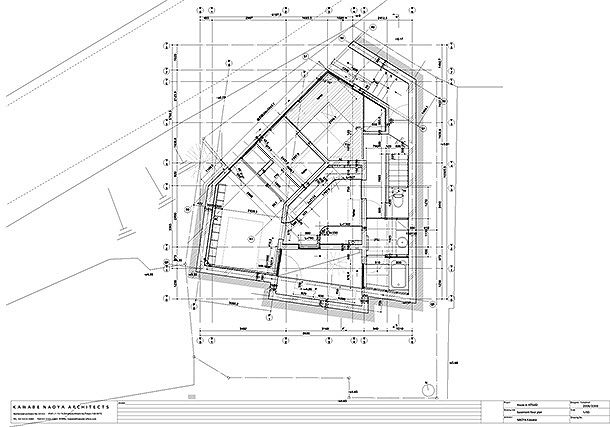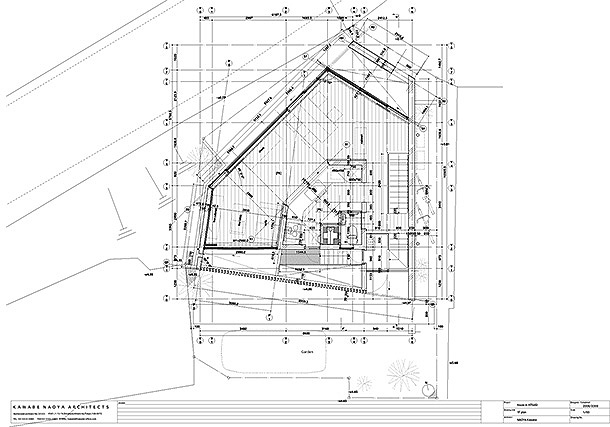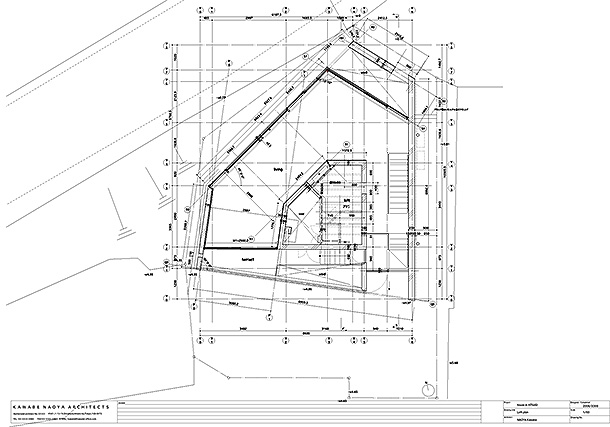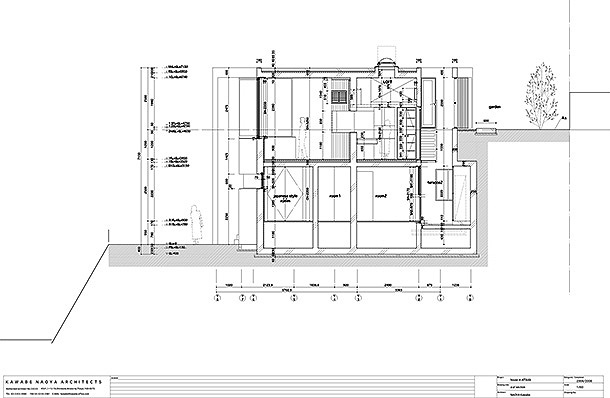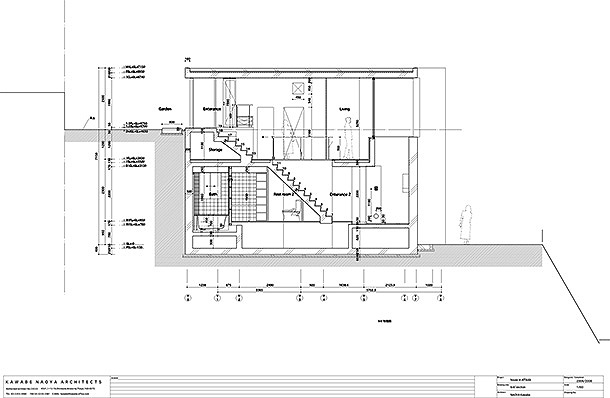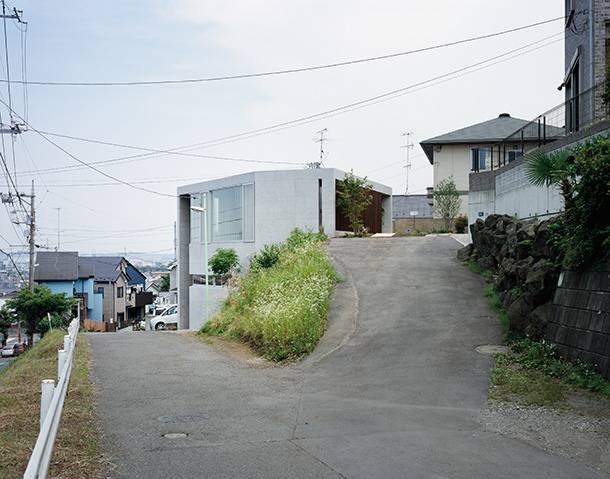
House in Atsugi is a two-storey building in a residential neighbourhood of the city. It has been designed by Tokyo-based studio KAWABE NAOYA ARCHITECTS. The house occupies a very tight plot which is, moreover, situated on a hill slope. The architects have striven to respond to these conditions and to use the interior space in the most efficient way. As a result, the house has an ‘upside-down’ structure which means that the entrance is located on the top floor while the more private rooms like bedrooms – on the lower.
The appearance of the building is rather typical for Japanese minimalist architecture: it features a simple geometric shape and a reduced palette of materials and colours. A strip of large windows with sliding sections on the north fa?ade provide the interior space with much natural light. Rough concrete is a material which predominates in exterior and interior design. For the upper floor the architects combined it with dark wood and for the lower floor – with light-coloured wood.

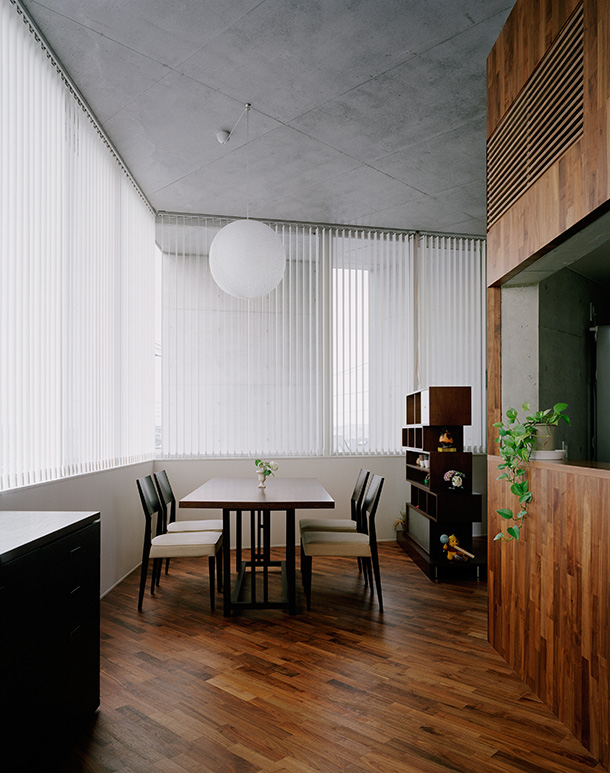
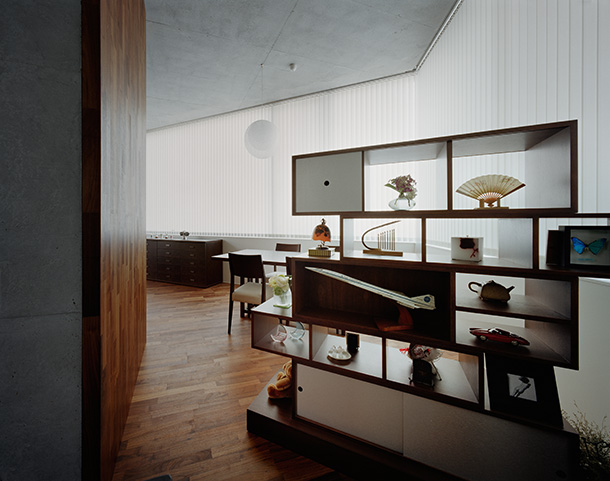
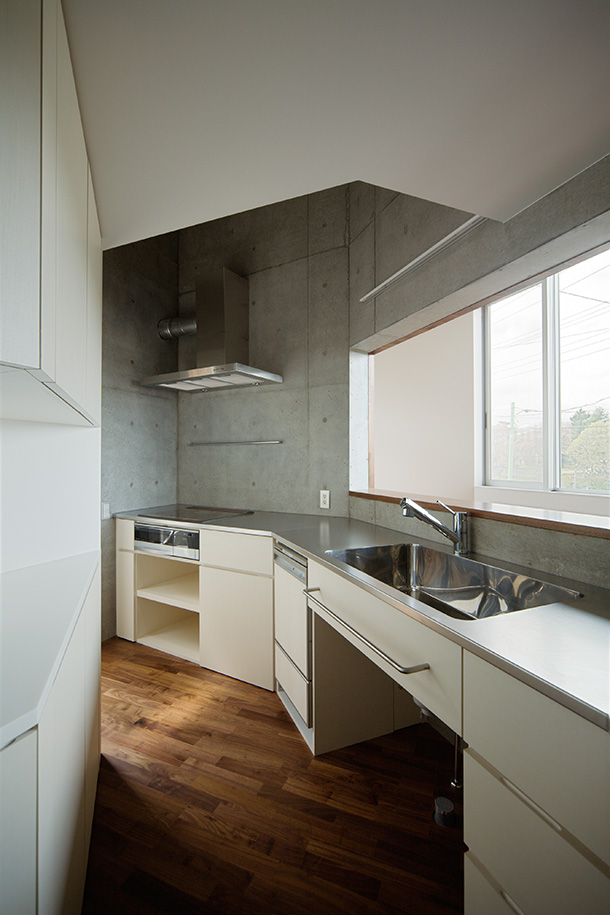
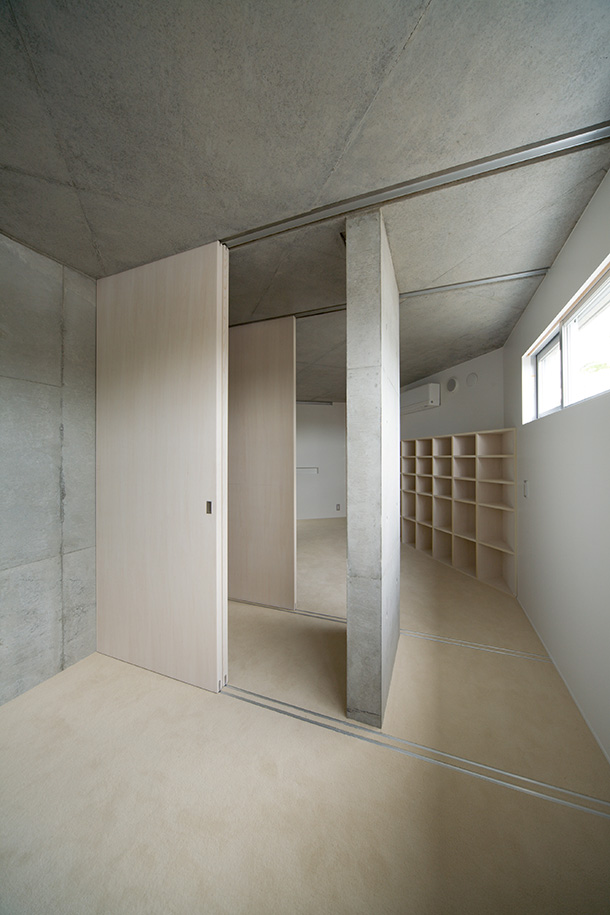
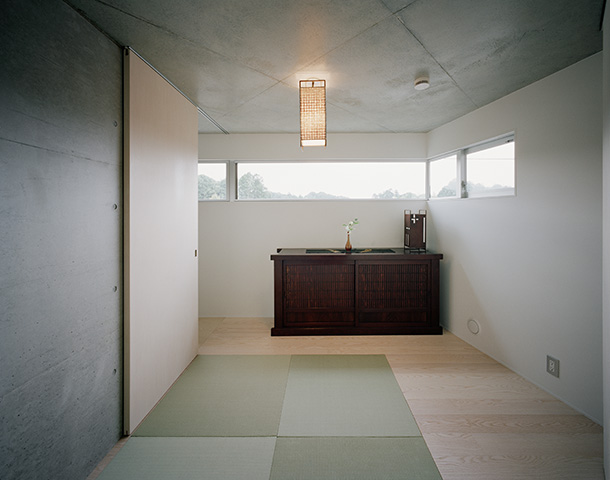
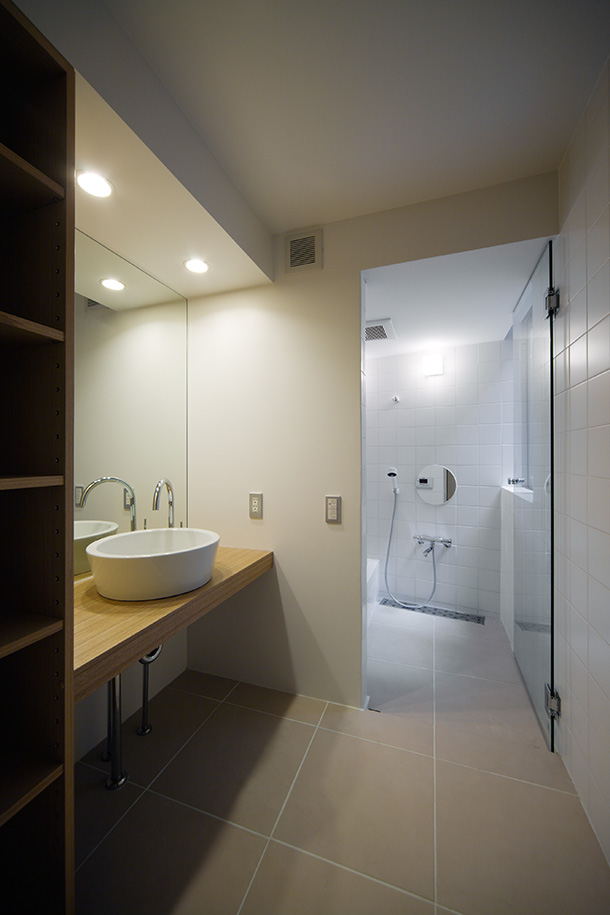
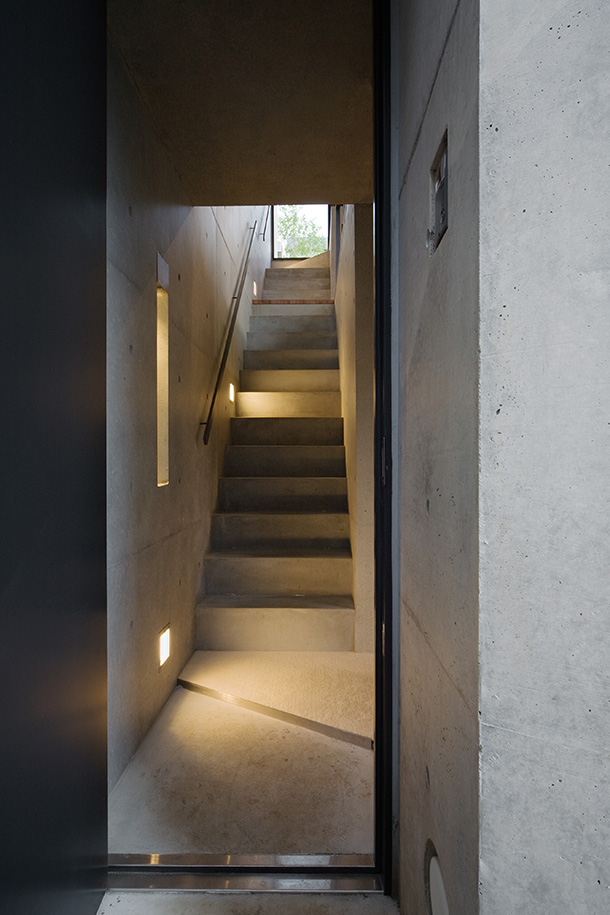
There are some project drawings by KAWABE NAOYA ARCHITECTS:

